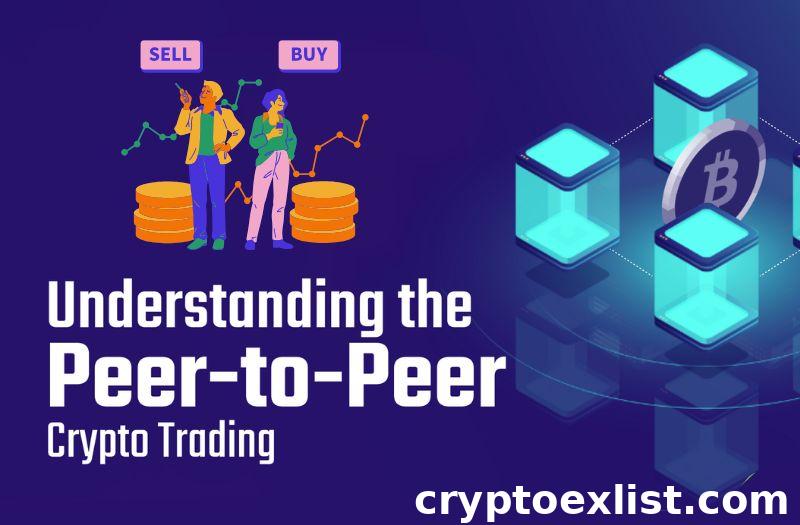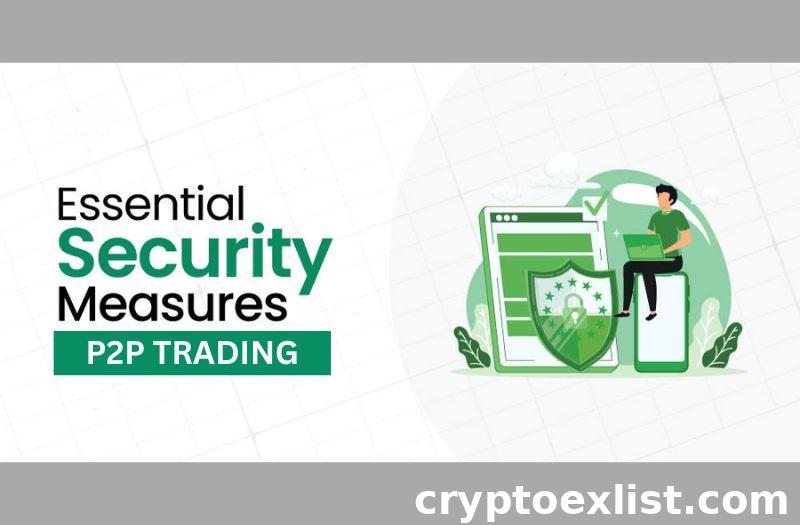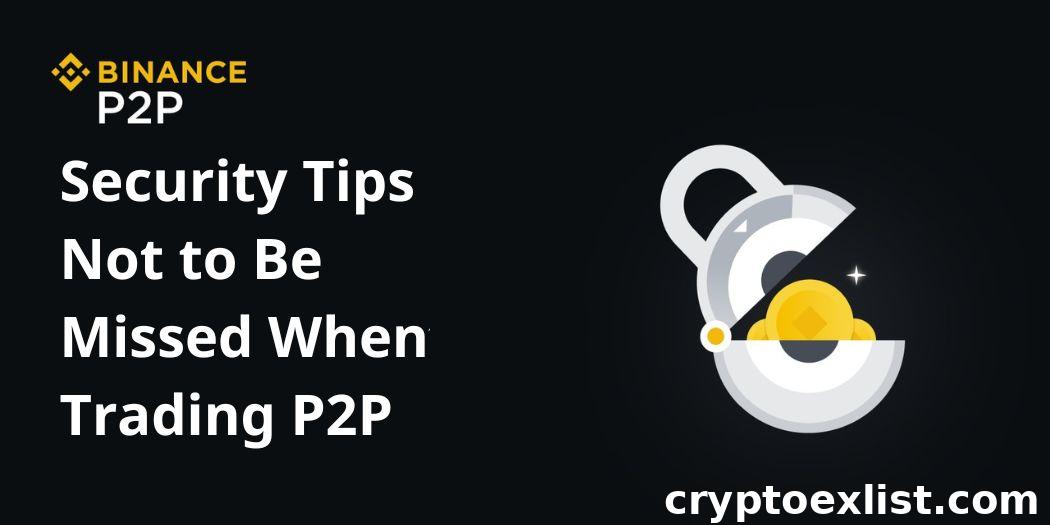
Peer-to-Peer (P2P) trading on Binance offers a flexible and secure way to buy and sell cryptocurrency, but it’s crucial to stay informed about security best practices. Whether you’re new to P2P trading or looking to enhance your safety measures, understanding the key risks and implementing essential security steps can protect your assets and ensure a smooth trading experience. In this guide, we’ll explore the fundamentals of P2P trading, important security measures like enabling Two-Factor Authentication (2FA) and utilizing Binance’s escrow service, and how to spot red flags to avoid scams.
Understanding P2P Trading
Peer-to-Peer (P2P) trading is transforming the way people buy and sell cryptocurrency, especially for those seeking more control and flexibility over their transactions. On platforms like Binance P2P, users can trade directly with one another without the need for an intermediary. This means buyers and sellers negotiate terms, set prices, and choose payment methods that work best for them, all while Binance facilitates a secure and user-friendly trading environment. Whether you’re a beginner or seasoned trader, understanding how P2P trading works is key to getting the most out of your cryptocurrency experience.
What is P2P Trading?
P2P trading, or Peer-to-Peer trading, allows individuals to trade cryptocurrency directly with each other. Unlike traditional exchanges where trades are executed automatically by the platform, P2P trading lets users interact directly to finalize their trades. On Binance P2P, the platform acts as a facilitator, providing the marketplace where buyers and sellers can list their offers. Binance also adds an important layer of security through its escrow service, which holds the cryptocurrency until both parties confirm the transaction has been successfully completed. This ensures that both the buyer and the seller are protected throughout the trading process.
Benefits of P2P Trading
There are several compelling benefits to P2P trading, particularly for those who prefer more control over their transactions. First, P2P trading offers a higher level of flexibility. Users can negotiate prices directly with their counterparties, allowing for potentially better deals compared to traditional exchanges. Additionally, P2P trading supports a wide range of payment methods, from bank transfers to e-wallets and even cryptocurrency payments. This diversity makes it easier to find a payment option that suits your needs, especially if you’re in a region where banking access is limited. Another advantage of P2P trading is the opportunity to trade without geographic limitations. Since trades happen directly between users, it’s possible to buy and sell cryptocurrency with individuals across the globe, all while enjoying lower fees and more control over the entire process.
Risks Associated with P2P Trading
While P2P trading offers several advantages, it’s important to be aware of the risks involved. One of the primary risks is dealing with untrustworthy users. Although platforms like Binance include measures such as user ratings, reviews, and identity verification, there’s still the potential for encountering fraudulent traders. For this reason, always make sure to choose verified users with strong ratings. Another potential risk is price volatility. In the fast-moving cryptocurrency market, prices can change quickly, and P2P trades may not always lock in the best rates. Lastly, certain payment methods carry their own risks, particularly when dealing with international payments, which could result in delays or fees. However, by leveraging Binance’s escrow service and taking the necessary precautions, most of these risks can be mitigated, ensuring a safe and successful P2P trading experience.

Essential Security Measures
When it comes to Peer-to-Peer (P2P) trading, security should always be a top priority. Whether you’re a seasoned trader or just starting out, ensuring that your transactions are secure can protect you from fraud and other risks associated with trading cryptocurrency. Binance P2P offers several built-in features to keep your trading safe, but there are also important steps you should take on your own to further enhance your security. Here’s a breakdown of essential security measures you should follow when engaging in P2P trading.
Use Reputable Platforms
The first and most important step to secure P2P trading is to always use a reputable platform like Binance. Binance P2P provides a trusted environment where buyers and sellers can connect, offering features like escrow services and dispute resolution to ensure that both parties are protected during transactions. On reputable platforms, you’ll also benefit from advanced security protocols, such as encryption, fraud detection, and identity verification processes, all designed to create a safer trading experience. Avoid using lesser-known or unregulated P2P platforms, as these may lack the necessary safeguards and expose you to unnecessary risks.
Enabling Two-Factor Authentication
Another crucial security measure is enabling Two-Factor Authentication (2FA) on your Binance account. 2FA adds an extra layer of security by requiring not only your password but also a unique verification code, typically sent to your mobile device, to log in or complete certain actions. This makes it significantly harder for unauthorized users to gain access to your account, even if they somehow obtain your password. Binance supports multiple forms of 2FA, such as SMS-based authentication or apps like Google Authenticator. By enabling 2FA, you can protect your account from hackers and ensure that only you have access to your funds and trading activity.
Verifying User Profiles and Reviews
Before entering into a P2P trade, it’s important to verify the profile of the person you’re trading with. On Binance P2P, you can easily check a user’s rating, trade history, and reviews from other traders. A high rating and positive reviews are usually good indicators of a trustworthy trading partner. Binance also verifies certain users through identity verification (KYC), adding another layer of credibility. Avoid engaging in trades with users who have low ratings, limited transaction history, or negative feedback, as these could be red flags. By carefully reviewing the profile of your trading partner, you can significantly reduce the risk of dealing with a fraudulent or unreliable user.
Protect Personal Information
Finally, protecting your personal information is critical in P2P trading. Only share the information necessary to complete the transaction, and avoid giving out sensitive details like your home address, bank account information, or identification documents unless required. When communicating with the other party, use Binance’s built-in messaging system, which encrypts your conversations and ensures your data is secure. Be wary of anyone requesting personal information outside of the normal transaction process, as this could be a sign of a scam. By limiting the amount of personal information you share and using secure communication channels, you can better safeguard your privacy while trading on Binance P2P.

Protecting Your Assets
When engaging in Peer-to-Peer (P2P) trading, safeguarding your assets should be a top priority. While platforms like Binance P2P provide a secure environment for buying and selling cryptocurrency, there are additional steps you can take to further protect your funds. From utilizing escrow services to setting up strong passwords and keeping your software updated, these essential security practices will help you minimize risks and trade with confidence.
Utilizing Escrow Services
One of the key features that protect your assets in Binance P2P trading is the escrow service. Escrow acts as an intermediary, ensuring that both the buyer and the seller fulfill their obligations before the transaction is completed. When a buyer initiates a trade, Binance holds the seller’s cryptocurrency in escrow until the payment is verified. Once the seller confirms they’ve received the funds, the crypto is released to the buyer’s wallet. This system protects both parties from fraud, making it a safe and reliable way to trade. For newbies, relying on escrow services adds peace of mind by ensuring that your assets are protected throughout the transaction process.
Setting Up Strong Passwords
A strong password is your first line of defense against unauthorized access to your Binance account. It’s crucial to create a password that is both complex and unique—avoid using easily guessed combinations like birthdays or common words. Instead, use a mix of upper and lower case letters, numbers, and special characters. Also, avoid reusing passwords across multiple platforms, as this can increase your vulnerability. Binance also supports Two-Factor Authentication (2FA), which should always be enabled to add an extra layer of security. By setting up a strong password and pairing it with 2FA, you can significantly reduce the chances of your account being compromised.
Keeping Software Updated
Keeping your software and apps updated is another essential step in protecting your assets. Whether you’re using the Binance mobile app or accessing the platform from a web browser, ensure that you’re running the latest version of the software. Updates often include important security patches that protect against new vulnerabilities or threats. Additionally, keep your operating system, antivirus software, and any other security tools up-to-date to provide the best defense against malware or hacking attempts. By staying current with software updates, you’ll maintain a secure trading environment and reduce the risk of potential breaches.
Recognizing Red Flags
When entering the world of Peer-to-Peer (P2P) trading, it’s important to stay alert and aware of potential red flags that could indicate fraud or suspicious activity. While platforms like Binance P2P provide a secure and trusted environment, it’s still crucial to be able to recognize warning signs during your trades. By learning how to identify suspicious behavior, understanding common scams, and trusting your instincts, you can ensure a safe and successful trading experience.
Identifying Suspicious Behavior from Traders
One of the key aspects of P2P trading is directly interacting with other traders, so it’s essential to be cautious of anyone exhibiting unusual behavior. A common red flag is when a trader insists on communicating or completing the transaction outside of the Binance P2P platform. This could be a tactic to bypass the platform’s escrow protection, leaving you vulnerable to scams. Additionally, traders who rush you through the transaction or offer deals that seem too good to be true should raise concerns. Always look at a trader’s profile before engaging in a transaction—check their ratings, reviews, and trade history. Low ratings, limited history, or negative feedback are clear signs to avoid trading with that user. By staying vigilant and using Binance’s built-in features like escrow and user verification, you can greatly reduce your chances of encountering suspicious behavior.
Understanding Common Scams in P2P Trading
Scammers in the P2P trading world often use tactics designed to exploit new or inexperienced traders. One common scam is the “payment reversal,” where a buyer sends funds and receives the cryptocurrency but then reverses the payment after the trade is complete. To avoid this, always ensure that you receive verified payment before releasing any cryptocurrency from escrow. Another scam involves fake receipts or proof of payment. Scammers might send doctored screenshots to convince you that they’ve made the payment when, in reality, no transaction occurred. Always verify payments directly through your bank or payment service provider before completing the trade. By understanding these common scams, you can be better prepared and more cautious during your P2P trades.
Trusting Your Instincts
In the world of P2P trading, trusting your instincts is just as important as following practical security measures. If something about a trade doesn’t feel right—whether it’s a rushed transaction, inconsistent communication, or an overly generous offer—it’s perfectly okay to step back and reevaluate. It’s better to be cautious and cancel a trade than to risk losing your assets. Remember that Binance P2P gives you full control over your trades, so you’re never obligated to proceed if you feel uncomfortable. If you encounter anything suspicious, you can also report the user to Binance’s support team for further investigation. By trusting your instincts and prioritizing your safety, you can trade confidently in the P2P market.

Conclusion
P2P trading on Binance provides a convenient platform for direct cryptocurrency transactions, but it’s essential to prioritize security at every step. By using reputable platforms, enabling Two-Factor Authentication, and verifying user profiles, you can protect yourself from common risks. Leveraging Binance’s escrow services and recognizing suspicious behavior further ensures a safe trading environment. With these security tips, you can confidently navigate the world of P2P trading, safeguarding your assets while enjoying the benefits of this decentralized trading model. Stay vigilant, trust your instincts, and trade securely on Binance P2P.























